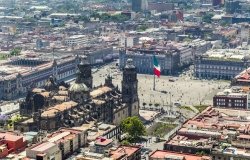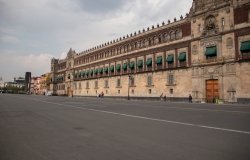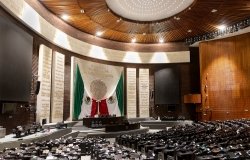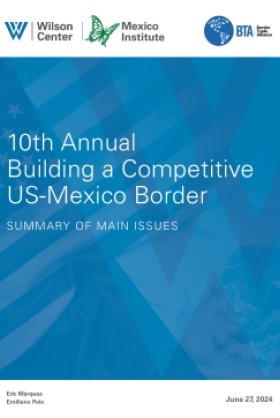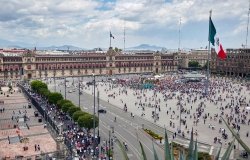Normalizing Rarity: The Awakening of Rare Diseases in Latin America
This article synthesizes our panelists’ presentations and summarizes the discussion during "The Awakening of Rare Diseases in Latin America" event, which took place on August 9th, 2022 via Zoom.
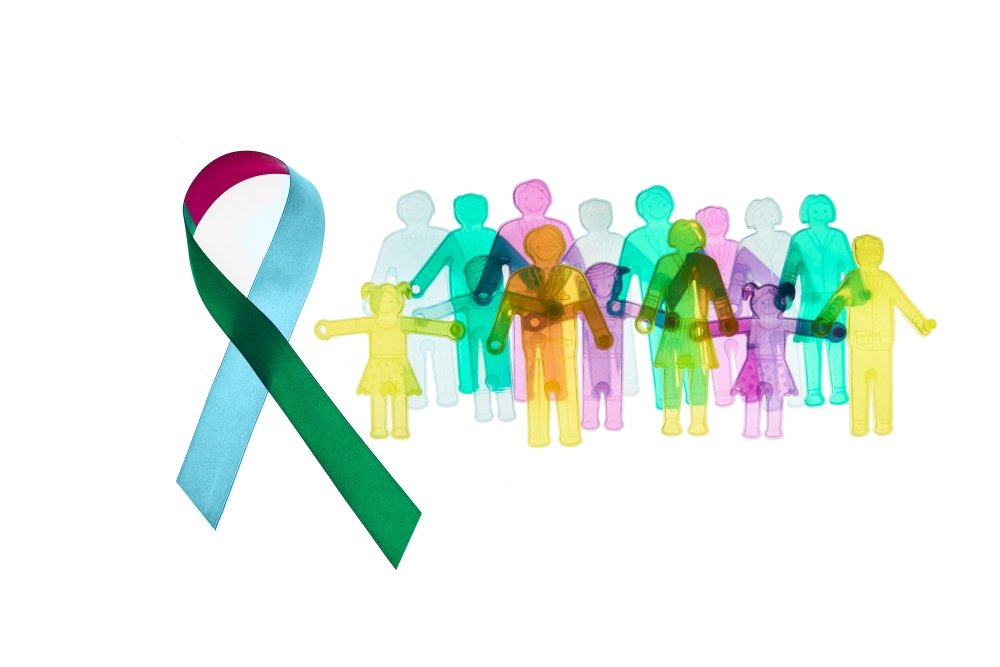
AHF
Rare diseases are not uncommon. While each of the roughly seven thousand identified rare diseases (RDs) individually appear in a small number of patients, altogether these conditions affect roughly 50 million people in Latin America, underscored Dr. Claudia Gonzaga-Jáuregui, Principal Investigator at the Universidad Nacional Autónoma de México’s Mendelian Genomics and Precision Health Laboratory.
RDs are conditions of low prevalence, with the precise threshold varying on a national and regional basis, she noted. For instance, the U.S. defines RDs as conditions that afflict less than 200,000 Americans, and the European Union set the qualifying prevalence at one in less than 2,000 people. Many Latin American countries have adopted the EU definition while others in the region have codified unique definitions that equate to similar prevalence rates. In Mexico, for an example, conditions qualify as rare if they occur in less than 5 in 10,000 persons.
Despite inconsistencies, when public health codes define RDs, they provide an essential scaffolding on which additional policies to improve patient care and quality of life can be built, agreed Dr. Gonzaga-Jauregui and Diego Gil Cardozo, Executive Director of the Colombian Federation of Rare Diseases (FECOER).
Diagnostic Odyssey
One focal point for such policies is to ameliorate the diagnostic odyssey that patients and caregivers endure. In the last decade, technology has improved diagnostic accuracy and speed tremendously, but the journey from developing symptoms to obtaining a diagnosis remains long, expensive, and emotionally draining, noted Dr. Gonzaga. With molecular diagnostics and newborn screening practices – largely implemented in high-income countries – the average diagnosis time for RDs is around five years; however, in Latin America, it takes an average of ten, she observed. The COVID-19 pandemic, Gil offered, only extended and complicated the diagnostic odyssey as well as access to RD management more broadly. Accessing RD care became more financially onerous for families weathering layoffs and lockdowns as well as logistically challenging given the strain the crisis placed on public health workers and infrastructure, not to mention the risk that COVID-19 posed for patients.
Opportune access to molecular and genomic technology for early diagnosis can help mitigate the burden of the diagnostic odyssey, Dr. Gonzaga suggested. This process matters because it allows for early interventions that prevent adverse outcomes; increases access to disease management options earlier on; provides opportunities for planning based on known disease prognoses; and offers insights for planning for other pregnancies and cascade testing, she specified. Moreover, the research and monitoring enabled through early diagnosis also provides essential input for public health policy development to support people living with rare diseases and to take advantage of precision medicine.
Policy Implementation
Brazil’s experience harnessing early momentum to expand RD legal frameworks offers a promising example for other countries in the region. Brazil’s first attempt at devising a national policy for RDs in 2009 amounted merely to unimplemented “paperwork,” according to Dr. Roberto Giugliani, Head of Rare Diseases at DASA Genomics and Co-Founder of the Casa dos Raros in Porto Alegre, Brazil. But in the decade afterward, Brazil defined RDs as conditions with a prevalence of less than or equal to 65 in 100,000, or around 1 in 1,500 in 2011; designated federal funding for RDs, created a procurement system for orphan drugs and mandated private insurance to provide access to RD diagnostic tests in 2012; and mandated the creation of RD reference service centers across the country in 2017. Dr. Giugliani noted that these laws, coupled with expedited RD drug and clinical research approval processes by the Brazilian Health Regulatory Agency (Anvisa), a 2018 Supreme Court decision to provide RD drugs urgently under certain conditions, and expanded newborn screening programs (now including 60 diseases, up from 4 in 2001, have completely revolutionized the RD landscape in Brazil.
The need for expanded access to RD services remains clear, and many countries have adopted robust regulatory frameworks to enshrine these priorities. However, Latin America faces major implementation hurdles, further marginalizing this patient population, said Gil. In the words of Dr. Iván González, former Acting Minister of Health of Colombia, “The problem is not what is written, but what happens in reality after things are written.” He acknowledged that there are “a lot of gaps between what is intended in the law and what is happening for people with rare diseases and their families.”
Gil echoed the importance of including patients and caregivers in the policy design and implementation process. In response, Dr. González spoke to the Colombian Ministry of Health’s RD approach, which begins with education centered on the patient and their family. This model forces health authorities to address the non-medical ramifications of RDs, such as how a patient with limited mobility will go from home to the clinic to receive care or what the financial strain for caregivers – often family members who devote most of their time to the patient – implies. Ultimately, the conversation must evolve to create healthcare models that holistically deliver the services that patients and families need, he stated. Gil seconded this approach, particularly for patients from disadvantaged socioeconomic and rural backgrounds, who already face greater obstacles in obtaining and accessing medical care.
Advocacy
The evolution of RD policies and standards relies not just on policymakers but also on tenacious patient associations, noted Antoine Daher, President of Casa Hunter, a Brazilian non-profit focusing on RDs. He explained that major changes – including the laws for reference centers and newborn screening – consistently result from patient and caregiver advocacy coordinated across the community, government, academia, pharmaceutical manufacturers, and patient groups.
While advocacy has propelled progress on RDs in the region, patient associations still face challenges, both internally and externally. Daher celebrated patient groups’ past success but acknowledged that advocacy approaches have largely depended on emotional and sympathetic appeals. He stressed the importance of evidence-based approaches to generate more sustainable and impactful change for patients and caregivers. In that vein, he called for patient organizations to work more like well-structured professional groups to defend patients’ rights and goals more effectively.
The professionalization of advocacy could better enable patient organizations to weather external tumult. For example, much of Casa Hunter’s work relies on maintaining excellent rapport with government officials. Sustaining such connections – and associated medium and long-term plans – has proven difficult with so much turnover in the Brazilian Ministry of Health in recent years. Gil also noted the uncertainty derived from political transitions, expressing his hope that RD efforts in Colombia move forward despite the ongoing change in administration.
Finding Common Ground for Rare Disease
The misinterpretations that the RD experience is truly atypical plus a lack of public awareness and information further isolate the RD community, which is primarily composed of people directly affected by RDs, Dr. González observed. He suggested that a change in the RD narrative would create an environment more conducive to conversation and mitigation of this isolation. Dr. Gonzaga added that moving the needle on RDs requires tandem – and interdependent – improvements in both regulatory frameworks and in social attitudes.
Cultivating a better understanding of RDs through evidence-based advocacy could also help bridge connections between patient associations and the public at large, ultimately ameliorating some of the challenges that public health officials encounter. One of the most challenging obstacles that health ministers face is balancing equity and equality, Dr. González acknowledged. Because of the nature of RD, creating – and then procuring – treatments is expensive, so health authorities who must strategically allocate limited budgets confront challenging choices between investing a few large sums to benefit a handful or many small sums to serve many, he explained. Adding a layer of further complexity, ministers must ensure that their decisions resonate with the public. Raising awareness on RDs is crucial to facilitating funding, he said.
Treatments and Prognosis for Improved Rare Disease Standards
The RD outlook in Latin America holds great promise, even if realizing improved standards requires continued work on behalf of – and among – legislators, government officials, and advocacy groups. Moreover, successful coordination must occur across different branches and levels of government, as Dr. Giugliani pointed out, but also between the state and industry. Dr. Mariana Rico, Regional Medical Director of Latin America at the Americas Health Foundation, emphasized the importance of stakeholder engagement to transform segmented efforts into a coordinated, united private-public front.
Furthermore, Gil contended that a crucial next step in Colombia is to standardize diagnostic norms to incorporate robust early screening in tandem with psychosocial support for patients and caregivers. Creating patient registries and specialized care centers could help reduce multidimensional impact that living with a rare disease can have on an individual, he elaborated.
Meanwhile, Mexico could stand to follow Colombia’s footsteps, suggested Dr. Gonzaga. She reiterated the importance of guaranteeing genetic and molecular testing for children suspected of being born with a RD, regardless of whether their parents receive healthcare coverage from the private, quasi-public, or social security system. She contended that reducing disparity across the various healthcare delivery systems would greatly benefit not only the roughly 2 million indigenous or underserved Mexicans living with rare diseases but the country’s entire 10 million RD patient population overall.
To facilitate access to treatment and to promote innovation while limiting political and financial controversies, Dr. González suggested implementing a two-pronged model for RD care. One prong should consist of comprehensive patient care based on proven processes, technologies, and treatments. In parallel to these basic protections, he proposed creating a fund for promoting and developing treatments that have not yet been proven but that are still essential for advancing the RD agenda. The comprehensive care prong can then incorporate experimental trials that generate measurable, reliable results, he concluded.
On the regulatory side of RD research and trials, Dr. Giugliani observed various challenges depending on a patient’s locus within their diagnostic odyssey. He argued that RD research cannot meet the sample group and control versus experimental group sizes that generalized statistical analysis practices require because, by definition, there is a miniscule number of people living with each rare disease. Control groups that may occur naturally outside studies and natural history information can support the development of new therapies, as can innovation in statistical approaches for small samples and new ideas for clinical trial uses. In sum, he said, the pharmaceutical industry and regulatory bodies must think creatively to overcome challenges. A forum or conference to standardize RD could also help generate more incentives for RD therapeutic companies, observed Dr. González.
Altogether, these policy recommendations provide an ambitious albeit essential agenda for RD policymaking in Latin America, accounting for patients’ medical, socioeconomic, and psychosocial needs, technological realities, and national sociopolitical sensitivities. While the expert panel’s dynamic discussion illustrated the complexities and challenges that the RD ecosystem faces in Latin America, the conversation also provided creative insights that assure the achievability of positive change for the RD community in the region.
Learn more about rare diseases in Latin America with this infographic.
With Support From

Horizon

AHF
About the Author


Mexico Institute
The Mexico Institute seeks to improve understanding, communication, and cooperation between Mexico and the United States by promoting original research, encouraging public discussion, and proposing policy options for enhancing the bilateral relationship. A binational Advisory Board, chaired by Luis Téllez and Earl Anthony Wayne, oversees the work of the Mexico Institute. Read more

Brazil Institute
The Brazil Institute—the only country-specific policy institution focused on Brazil in Washington—aims to deepen understanding of Brazil’s complex landscape and strengthen relations between Brazilian and U.S. institutions across all sectors. Our mission is to provide thoughtful leadership and innovative ideas to help democracies evolve and enhance their capacity to deliver results. We achieve this by producing independent research and programs that bridge the gap between scholarship and policy, while serving as a hub for policymakers, scholars, and private sector leaders. Read more

Latin America Program
The Wilson Center’s prestigious Latin America Program provides non-partisan expertise to a broad community of decision makers in the United States and Latin America on critical policy issues facing the Hemisphere. The Program provides insightful and actionable research for policymakers, private sector leaders, journalists, and public intellectuals in the United States and Latin America. To bridge the gap between scholarship and policy action, it fosters new inquiry, sponsors high-level public and private meetings among multiple stakeholders, and explores policy options to improve outcomes for citizens throughout the Americas. Drawing on the Wilson Center’s strength as the nation’s key non-partisan policy forum, the Program serves as a trusted source of analysis and a vital point of contact between the worlds of scholarship and action. Read more

Science and Technology Innovation Program
The Science and Technology Innovation Program (STIP) serves as the bridge between technologists, policymakers, industry, and global stakeholders. Read more

Maternal Health Initiative
The Wilson Center’s Maternal Health Initiative (MHI) is dedicated to improving the lives of women, adolescents, and children around the world. MHI convenes experts from around the world to discuss solutions to end preventable maternal and newborn deaths and to navigate gender-based global health issues and their links to foreign policy. MHI explores a wide range of policy-related topics, including gender equity, global health, health care workforce and systems, caregiving, gender-based violence, workforce participation, girls’ education, and sexual and reproductive health and rights. MHI is globally focused with additional attention to women and girls living in humanitarian settings. Read more





